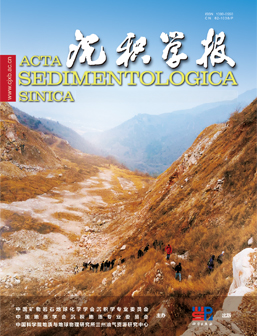Progress on Mining Methods of Sedimentological Information from Grain-Size Distribution Under the Background of Big Data
doi: 10.14027/j.issn.1000-0550.2023.117
- Received Date: 2023-09-12
- Available Online: 2023-12-06
-
Key words:
- big data /
- grain-size distribution /
- sedimentological information /
- intelligent mining
Abstract: [Significance] Grain-sizes of sediment contain multiple factors in transport way, depositional process and environment. Defined as the occurrence frequencies of different diameter particles in sedimentology and geology, grain-size distribution (GSD) records the original sedimentological information. It is one of the based data to reveal modern and ancient depositional environment in river, lake, ocean, desert, loess, etc. Traditional GSDs analytical methods are just adopted to discuss overall features of depositional processes and environments qualitatively or semi-quantitatively, which hardly overcome the defects of quantification and multiple-solutions. [Progress] In this paper, different classification standards of grain-size scale are summarized. Moment and graphical methods of GSD parameters and morphological description standards of frequency curve are compared. Applicability and attention of sedimentary environment analysis traditional methods for GSDs are combed. Using mathematical means, some unconventional research methods are formed to tackle the entirety of GSD. Unsupervised clustering algorithms calculate the similarity of GSDs using frequency, cumulative frequency or statistical parameter of GSDs. Then depositional environments are sorted according to the classes of clustering. Multifractal extracts fractal parameters to represent the complexity of GSDs frequency data. These fractal structures of GSDs could reveal different depositional properties. Operated by multiple sedimentary processes in some sedimentary environments and dynamics, GSD is superposed by multi-subpopulations, and the corresponding frequency curve is bimodal or multimodal. This implies that an inverse model of unmixing would be ideally suited to obtain genetically meaningful interpretations of these subpopulations. There are two kinds of technologies to separate grain-size component from frequency data of GSD. Based on finite mixture model in statistics, single-sample unmixing (SSU) uses probability density function, such as normal, skew normal and Weibull distribution, to unmix single GSD by curve-fitting techniques. Each grain-size component obeys unimodal distribution, and statistical parameters, mean, sorting, skewness, kurtosis and percentage, can be calculated. End-member modelling algorithm (EMMA) decomposes grain-size end-members from GSD dataset. These unimodal or multimodal grain-size end-members are linearly independent and fixed in one GSD dataset. Many improved EMMAs are realized in different open-source tools. In order to introduce applications of above-mentioned unconventional methods, 27 GSDs from central bar of the Kangshan River in Poyang Lake drainage are processed by clustering, multifractal, SSU and EMMA as an example. [Conclusions and Prospects] Sedimentation analysis confronting problems and big data characteristics of GDSs are concluded. Development tendencies of depositional significance analytical methods based on GSDs are prospected. With the advent of various modern grain-size analysis techniques and more sophisticated artificial intelligence procedures in earth sciences, new increasingly intelligent mining methods for GSDs would be emergence to understand the spatio-temporal grain-size patterns in sediments. Some excellent sedimentological related databases have been constructing. Accordingly, open-access database will be established for GSDs, including various kinds of data, intelligent methods and literatures. Under the background of big data, GSD big data technology would provide new engine to mine depositional properties deeply, and integrate into sedimentology big data. Four phases, initial, exploratory, early development and rapid development stage, can describe the research history of GDSs. The coming must be big data stage for mining sedimentological information from GSDs.
| Citation: | Progress on Mining Methods of Sedimentological Information from Grain-Size Distribution Under the Background of Big Data[J]. Acta Sedimentologica Sinica. doi: 10.14027/j.issn.1000-0550.2023.117 |






 DownLoad:
DownLoad: